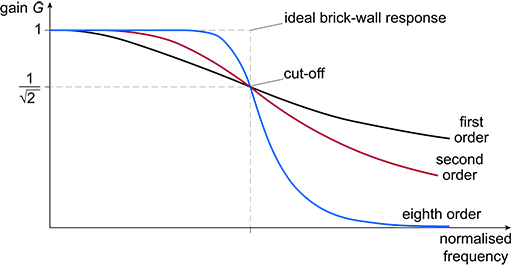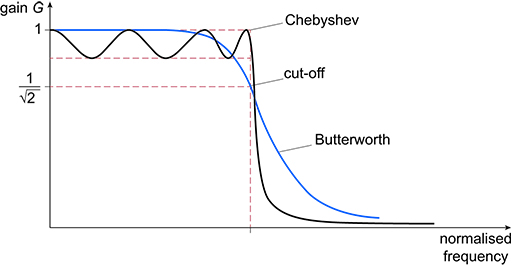2.7 Chebyshev and Butterworth filters
The design of higher-order filters is a specialist area, and mathematically complex, so in this section you will look at gain functions of just two celebrated types. The first is the Butterworth filter. The gain function of a Butterworth filter has the familiar flat passband and roll-off you would expect. However, this filter comes in various orders, such as 2, 4, 6, 8 and 10, depending on how steep the roll-off needs to be.
Figure 11 shows the normalised responses of first-order, second-order and eighth-order low-pass Butterworth filters. As the order of the filter increases, it approximates more closely the ideal brick-wall response.
Steeper roll-offs than those of a Butterworth filter can be had if other desirable features of a filter are compromised. The Chebyshev filter has a steeper roll-off, but at the price of a passband response that is not flat. Figure 12 compares seventh-order normalised Chebyshev and Butterworth filters. Notice the ripple in the Chebyshev filter’s response in the passband. (There is another type of Chebyshev filter that has a flat response in the passband and ripples in the stop band.)
That concludes the introduction to filters and, in particular, analogue filters. In Section 3 you will learn about digital filtering, which is currently a more popular approach to filtering.


